Physical Address
304 North Cardinal St.
Dorchester Center, MA 02124
Physical Address
304 North Cardinal St.
Dorchester Center, MA 02124
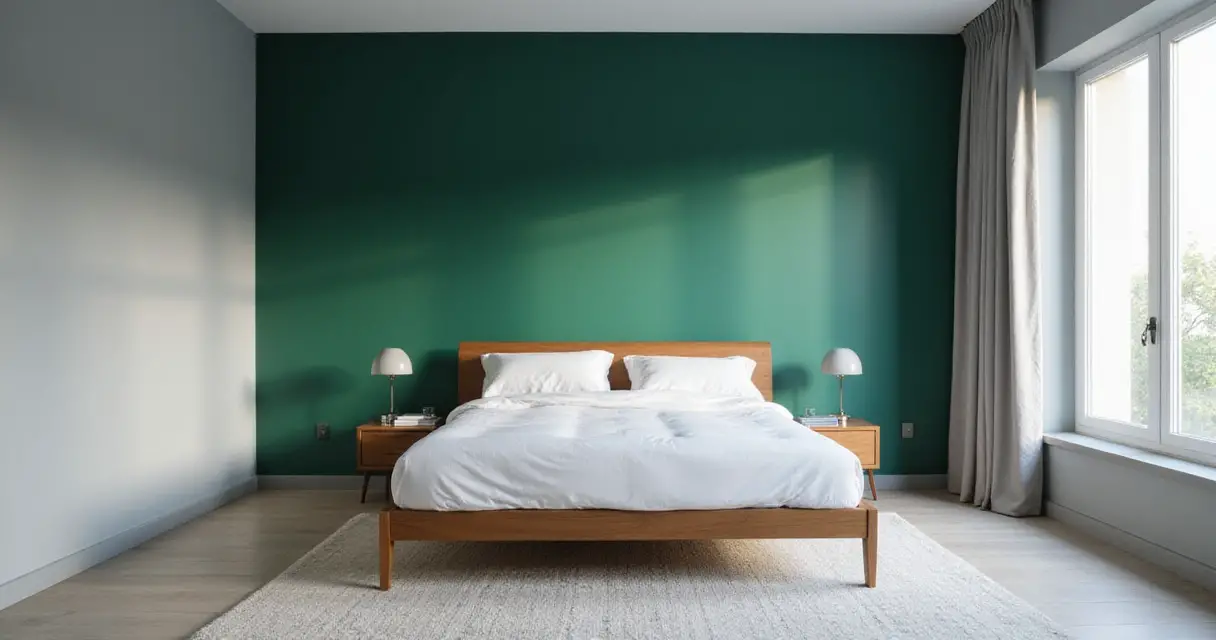
Discover 22 creative bedroom wall ideas from a children's space design expert—from bold accent walls to interactive chalkboard paint—perfect for creating spaces that grow with your family.
Of all the questions parents ask me, “What color should I paint my child’s room?” is the most common. And my answer is always another question: “How do you want the room to feel?”
A bedroom wall is so much more than a boundary. It’s the first thing we see in the morning and the last thing we see at night. In my work designing spaces for children, I’ve seen walls become co-conspirators in imaginative play, silent guardians of peaceful sleep, and proud galleries of a childhood in progress. Yet so often, we paint them beige and call it a day.
If you’re ready to think beyond basic, let’s talk. These aren’t just 22 ideas; they are starting points for creating a room that truly supports your child and reflects the style of your home. Let’s get those walls to do some work.
An accent wall is one of the quickest ways to bring personality into a room. But here’s the thing: it’s not just about a pop of color. It’s about creating a “zone.” That powerful color draws the eye and anchors the room, signaling what’s meant to happen in that spot. Think of it as a backdrop for the room’s most important activity.
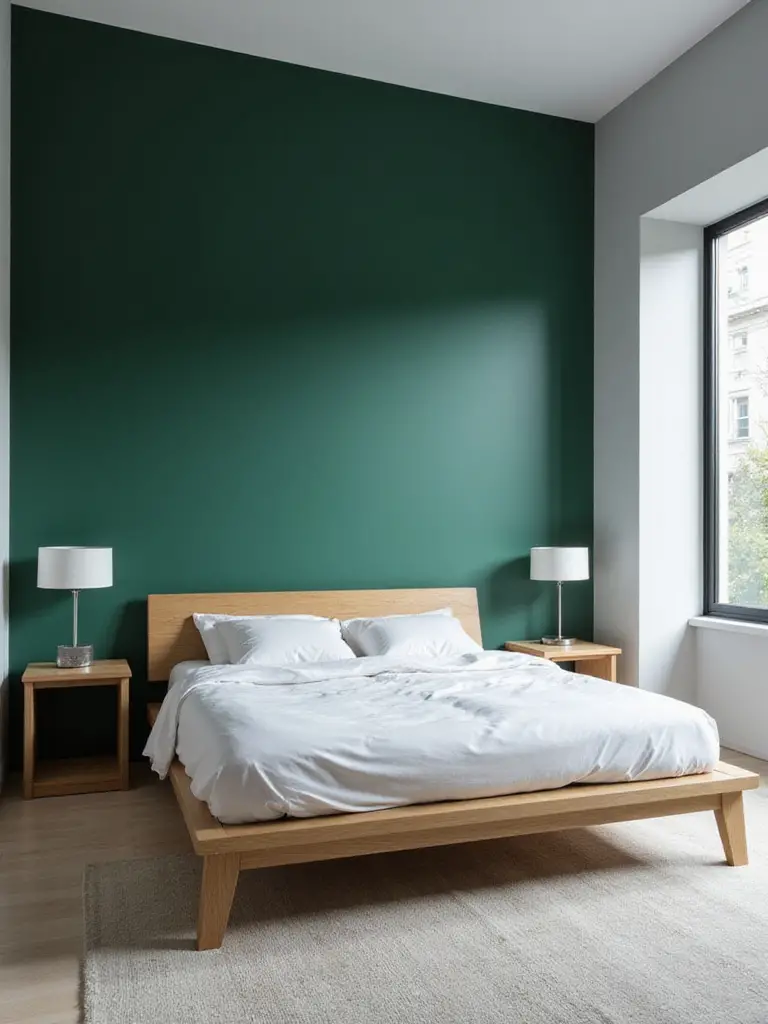
I recently worked with a family whose five-year-old was having trouble winding down for bed. His room was a riot of color and energy. We painted the wall behind his bed a deep, calming navy blue—like a night sky. We didn’t change anything else. A week later, his mom told me his whole bedtime routine felt calmer. He knew that the “blue space” was for rest. From my experience in child development, I know that visual cues like this are powerful. They help children organize their world and understand expectations without a single word.
An accent wall doesn’t just have to be paint, either. It can be texture, pattern, or material that says something about the space.
Now, I can feel some of you tensing up at the word “neutral.” Does it mean boring? Lifeless? Absolutely not. A neutral room isn’t an empty room; it’s a room that trusts your child to be the most colorful thing in it. Soft whites, warm greys, and creamy beiges create a peaceful foundation that doesn’t compete with the chaos of colorful toys and a child’s vibrant imagination. It prevents sensory overload.
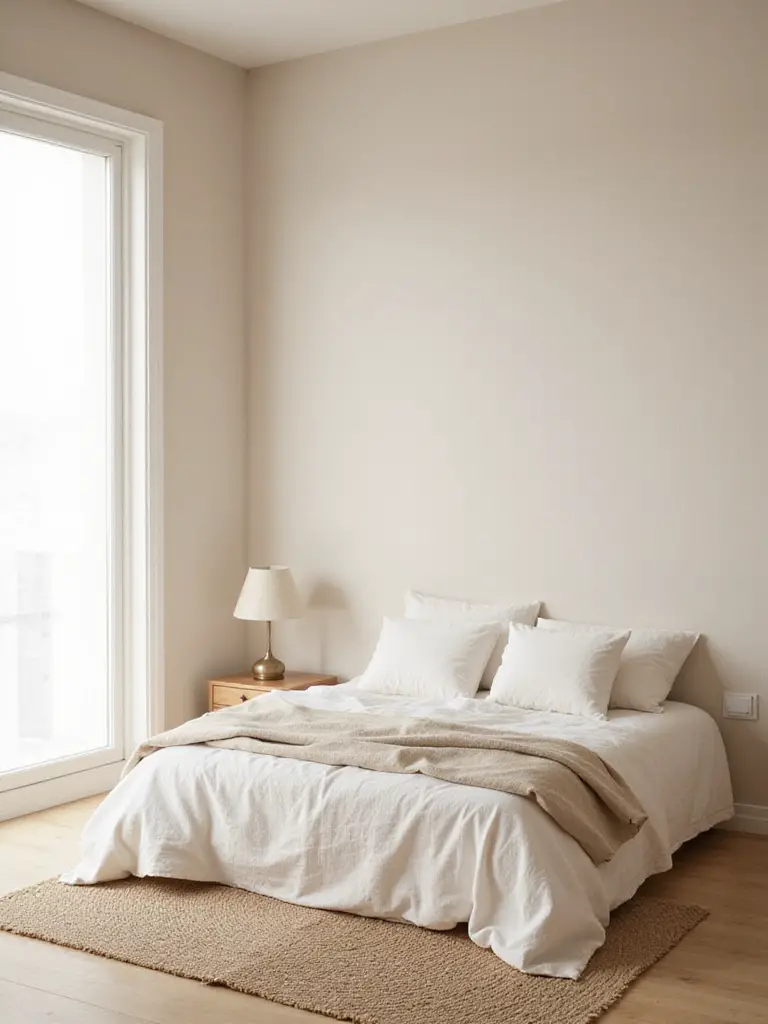
Think of it this way: a quiet backdrop lets your child’s artwork, a brightly colored quilt, or a collection of dinosaur figures be the star of the show. What I tell my clients is that a neutral palette honors their child’s creativity. I designed a playroom for a family with three young kids, and we used a soft, warm greige on the walls. When you walked in, your eyes didn’t dart around anxiously; they settled on the beautiful, chaotic art station and the colorful bins of LEGOs. The room felt alive, not sterile. The secret to making neutrals work is layering textures—a chunky knit blanket, a linen curtain, a smooth wooden toy shelf.
When a room is a calm canvas, it can easily adapt as your child’s interests—and your style—evolve over the years.
Okay, if neutrals feel a little too restrained for you, let’s talk wallpaper. Wallpaper offers a kind of built-in personality that paint just can’t match. And forget the fussy, impossible-to-remove papers of our parents’ generation. Modern peel-and-stick brands like Tempaper and Chasing Paper make it a non-committal weekend project that can totally transform a space.
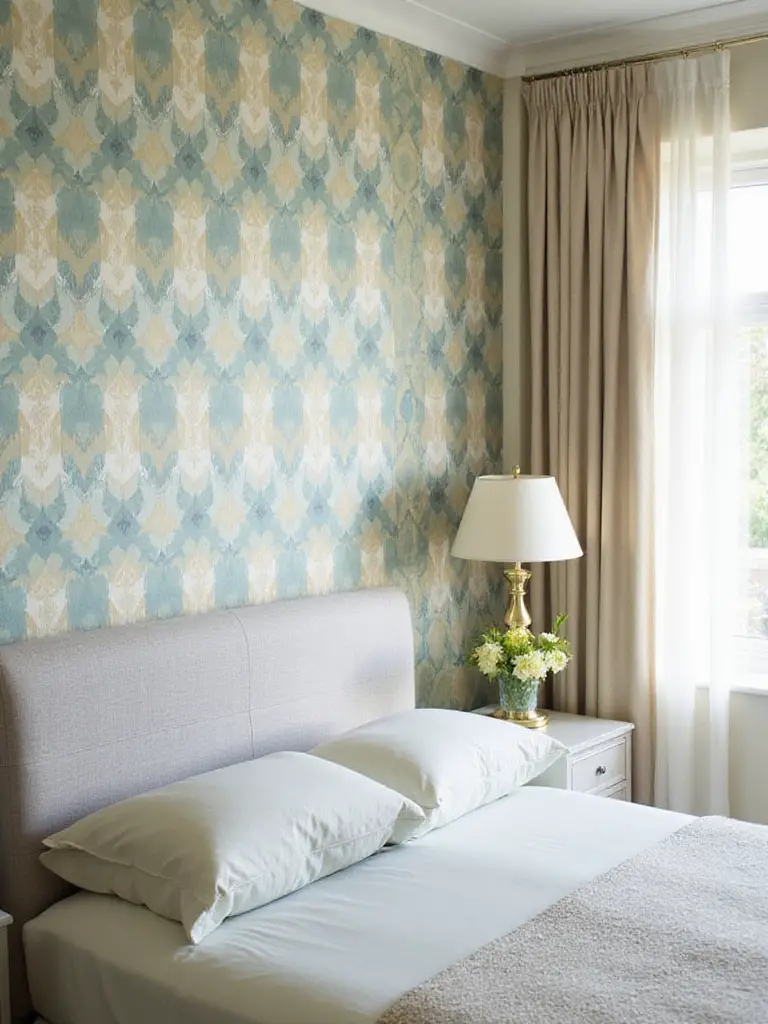
For kids’ rooms, a pattern becomes a universe for storytelling. A client chose a wallpaper with whimsical woodland creatures, and her daughter created entire soap operas for the little foxes and bears on her wall. It became more than decor; it was a prompt for her imagination. The key is scale. In a small room, a massive, bold pattern can feel like the walls are closing in. But a smaller, more delicate pattern can read as a simple texture from far away.
I learned this lesson the hard way early in my career. I fell in love with a bold, graphic wallpaper for a project without ordering a sample first. Once it was on all four walls, the room felt… electric. And not in a good way. Always, always order a sample and live with it for a few days. See it in the morning light and in the evening glow. You’ll know if it’s right.
This one is my secret weapon, especially for younger kids. My background in early education taught me how vital sensory input is for development. Textured wallpaper—grasscloth, cork, even subtly embossed or flocked patterns—is a direct invitation to touch and explore. It turns a flat, boring surface into a rich, tactile experience.
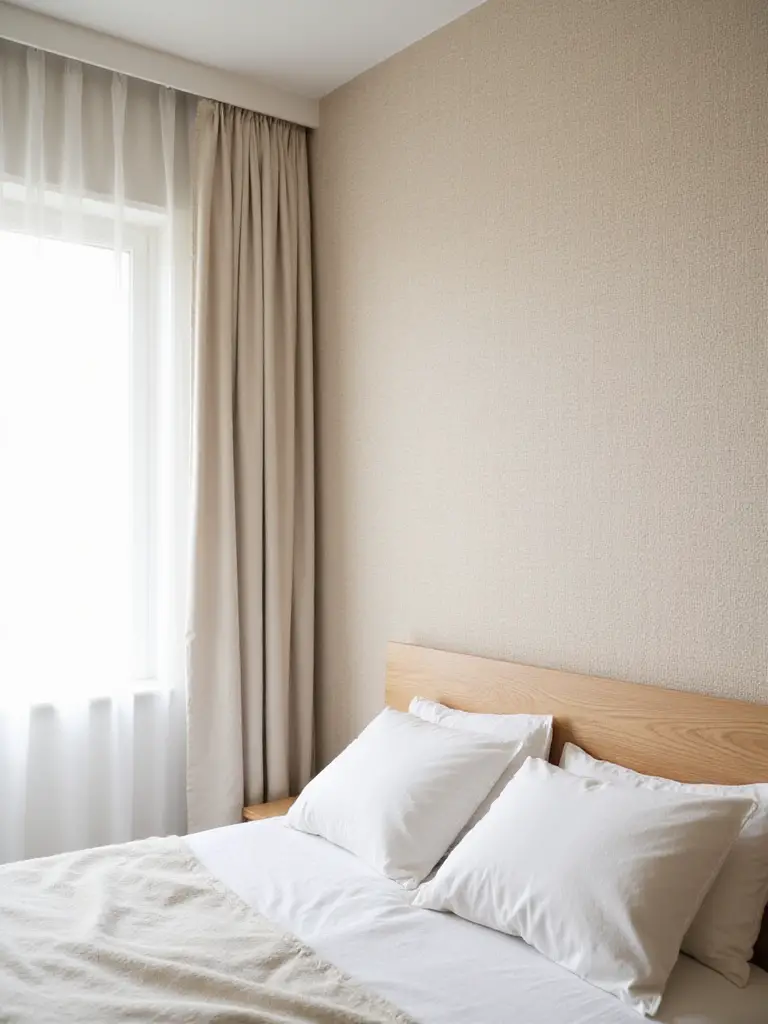
Imagine a toddler running their little fingers along the woven reeds of a grasscloth wall. That’s a beautiful, calming, sensory moment. I once specified a soft, velvety flocked wallpaper for a reading nook in a child’s room. It instantly created a sense of warmth and enclosure, a little “hug” from the walls that made the space feel extra cozy and safe.
What I find so interesting is that these textures also work on an adult level. They add a layer of sophistication and depth that feels luxurious and custom. So while your child is getting valuable sensory feedback, you’re getting a room that looks incredibly chic. It’s a true win-win.
A gallery wall turns your home into a living, breathing scrapbook. But let’s be honest, the pressure to create that “perfectly imperfect”, curated look can be paralyzing. People lay out frames on the floor for days, moving them a half-inch here, a half-inch there. My advice? Relax. A gallery wall should feel collected and loved, not like a sterile museum exhibit.
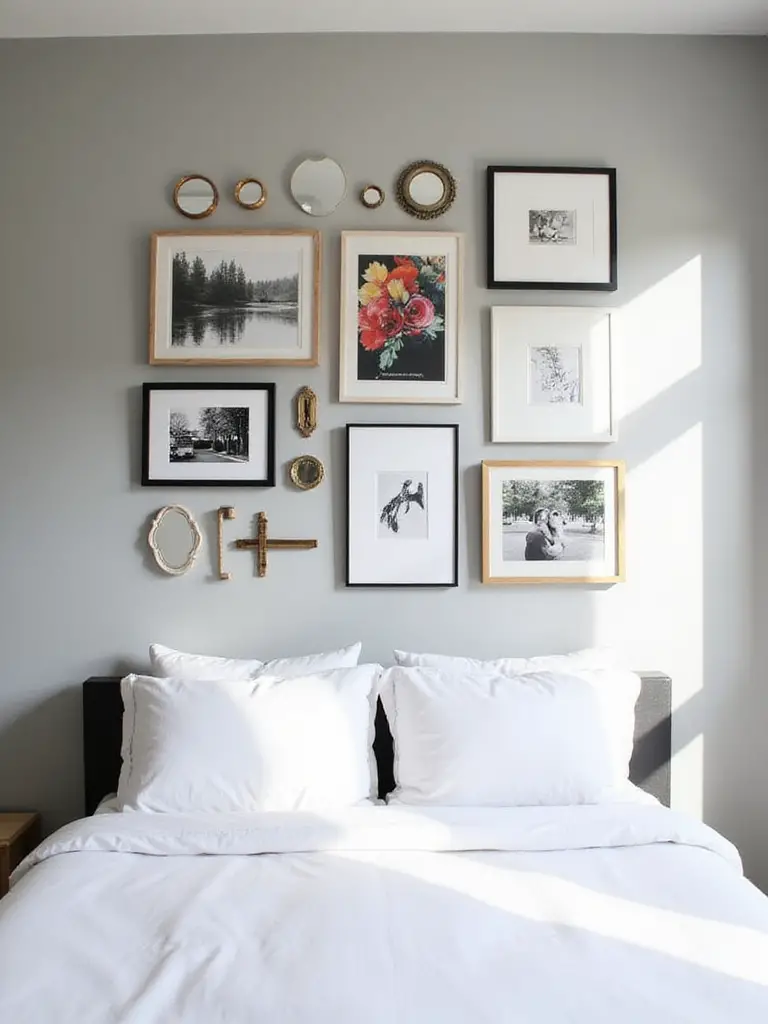
Here’s a trick I give all my clients: Get a roll of craft paper and cut out templates for each of your frames. Tape them to the wall with painter’s tape and live with the layout for a day or two. It’s a zero-commitment way to get it right.
But the most important thing I tell parents is to make it a living gallery. Use frames with easily removable backs or even cool bulldog clips to hold art. This sends a powerful message to your child: “Your work matters. What you create is beautiful, and it deserves a place of honor in our home.” Swap out the artwork every month. Mix in family photos, a leaf from a nature walk, a postcard from a trip. It should tell the ongoing story of your family.
Sometimes, less is so much more. Instead of the busyness of a gallery wall, a single, large piece of art can provide a powerful, simplified focus. It gives the eye a place to rest and the mind a single prompt to engage with. It’s an act of confidence.
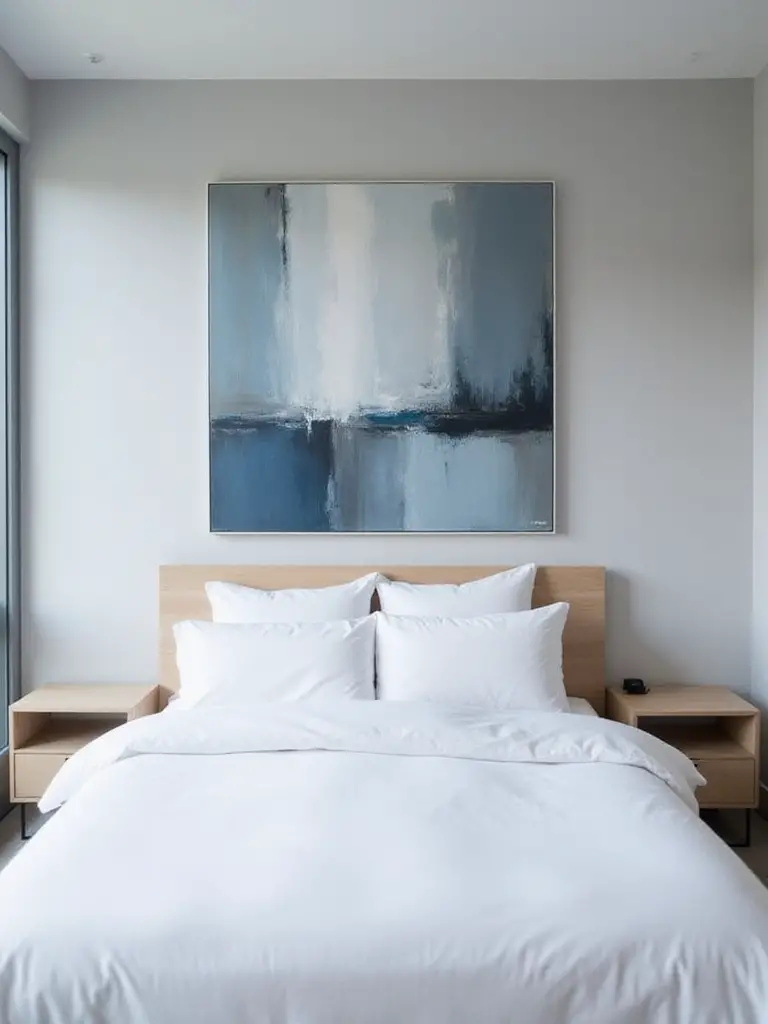
For a child’s room, this could be a huge, beautifully illustrated world map that sparks curiosity about faraway places. Or it could be a giant abstract piece where they can find hidden shapes and faces. I worked with a family who hung an enormous photograph of a misty forest over their daughter’s bed. It was calming and mysterious all at once, and it set a wonderfully serene tone for the whole room.
My ECE brain loves this approach because it reduces visual clutter, which can be overwhelming for some kids. Instead of ten little things to look at, there’s one big idea. The trick is scale. The art should be at least two-thirds the width of the furniture it’s hanging over—otherwise, it can look dinky and lost.
Hard surfaces bounce sound around a room, making it feel loud and sterile. Textiles do the opposite. They absorb sound, soften light, and add a layer of cozy texture that instantly makes a room feel more inviting. That’s why I love using tapestries, macramé pieces, or even large, beautifully printed fabric panels on bedroom walls.
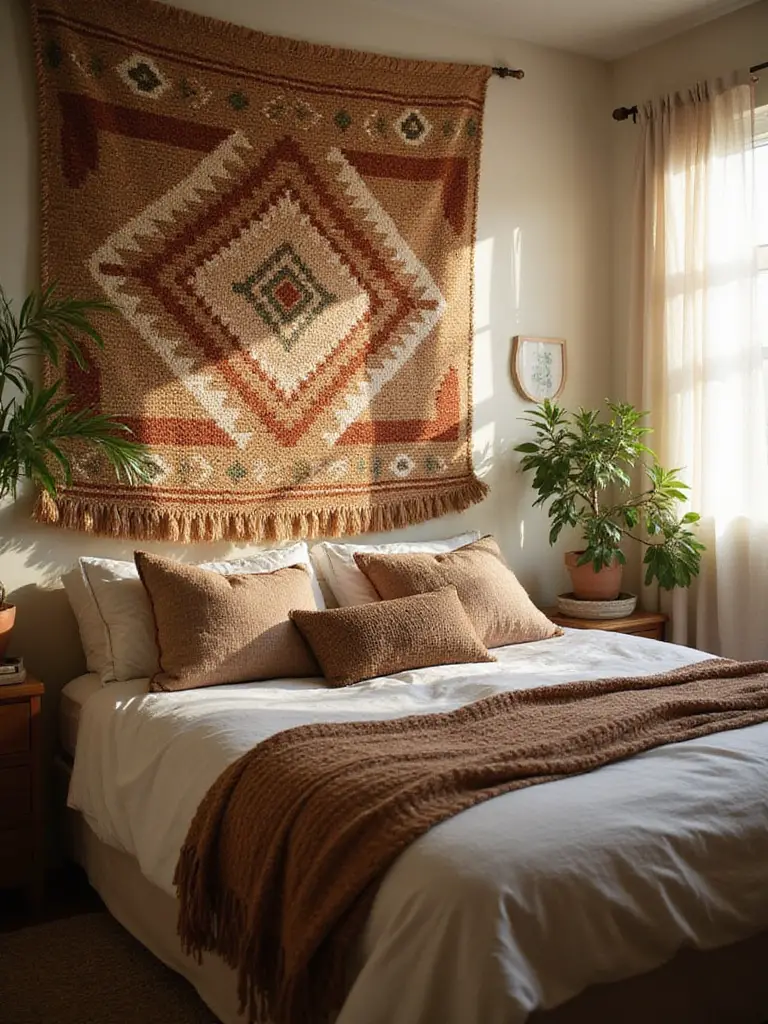
They’re particularly brilliant for apartments or homes with less-than-perfect walls, as they can cover a large area without a single drop of paint. I once worked on a bedroom for a very noise-sensitive child. The room had hardwood floors and high ceilings, and every little sound echoed. We hung a large, thick, woven tapestry on the biggest wall, and the change was immediate. It just ate the sound, making the whole room feel quieter and calmer.
These aren’t just for a bohemian vibe, either. A minimalist, graphic tapestry can feel incredibly modern and sophisticated. It’s one of the most effective ways to change the entire acoustic and emotional feel of a room with a single item.
Wood brings an unmatched warmth and connection to nature into a space. We know from studies in biophilic design that having natural elements in our environment reduces stress and helps us feel grounded. Plus, let’s be practical: wood paneling is incredibly durable and can stand up to the… enthusiasm… of active kids.
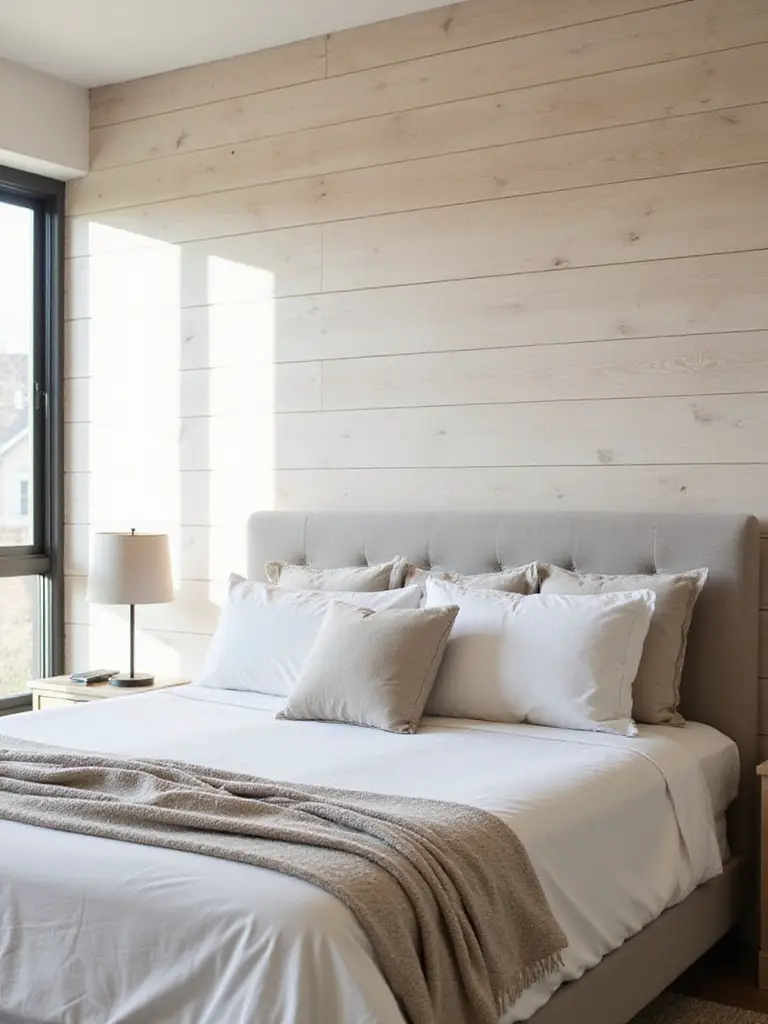
But forget the dated, dark-paneled basements of the 70s. Modern wood paneling is all about clean lines. You have classic shiplap, which adds a relaxed, coastal feel with its horizontal lines. Or there’s board and batten, which uses vertical lines to add a touch of architectural elegance and make ceilings feel higher. You can paint it any color or leave it natural.
A quick design lesson I’ve learned: In a room with a low ceiling, use vertical board and batten to draw the eye up. In a narrow room, use horizontal shiplap to make the space feel wider. It’s a simple architectural trick that can completely reshape the feel of a room.
There’s just something about brick. It has character, history, and a raw texture that pairs beautifully with soft bedding and warm lighting. It feels both rustic and urban at the same time. If you’re lucky enough to have original exposed brick, fantastic. If not, don’t worry—there are amazing thin-brick veneers and even 3D faux panels that look incredibly realistic.
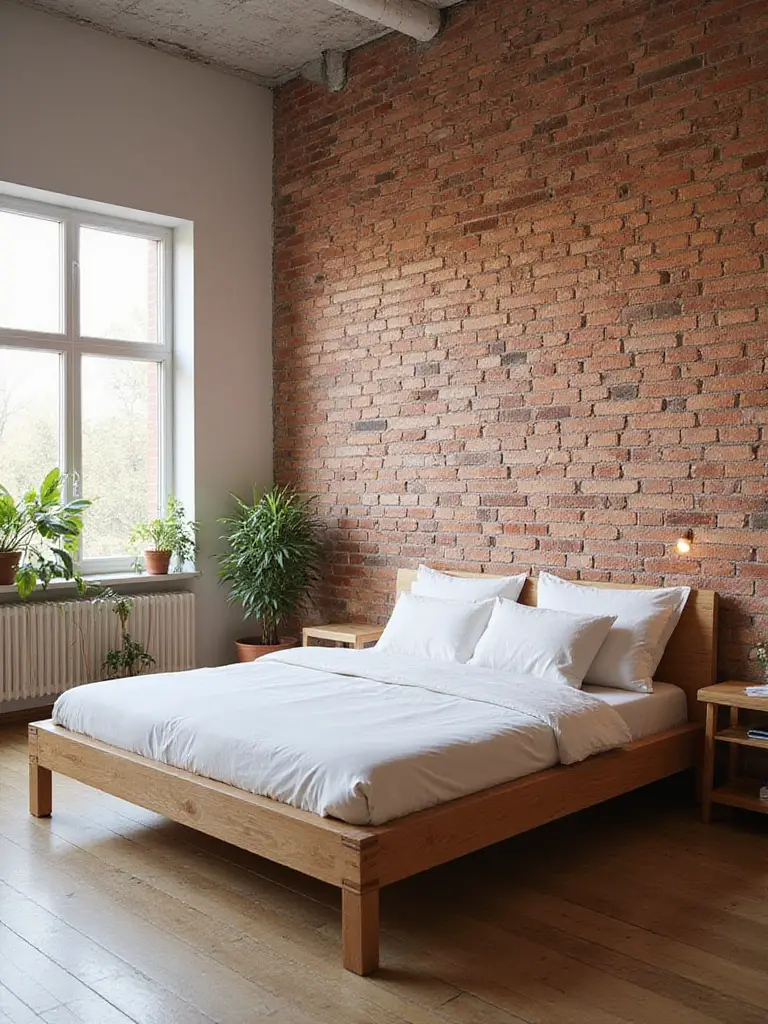
I love using brick in kids’ rooms. I tell parents that the imperfection of brick is a wonderful, unspoken lesson. It teaches kids that things don’t have to be slick and machine-perfect to be beautiful and strong. Each brick has its own unique color and texture.
For a softer look, you can whitewash it or do a German schmear, which leaves bits of the red peeking through. This maintains that gorgeous texture while brightening up the space. It’s a look with substance and soul.
Okay, stay with me on this one. It sounds very grand, I know. But covering a wall in fabric—a technique called upholstery—is one of the most luxurious and effective ways to create a soft, sound-dampening, cocoon-like environment. It’s especially wonderful for a wall behind a bed, acting as a floor-to-ceiling headboard.
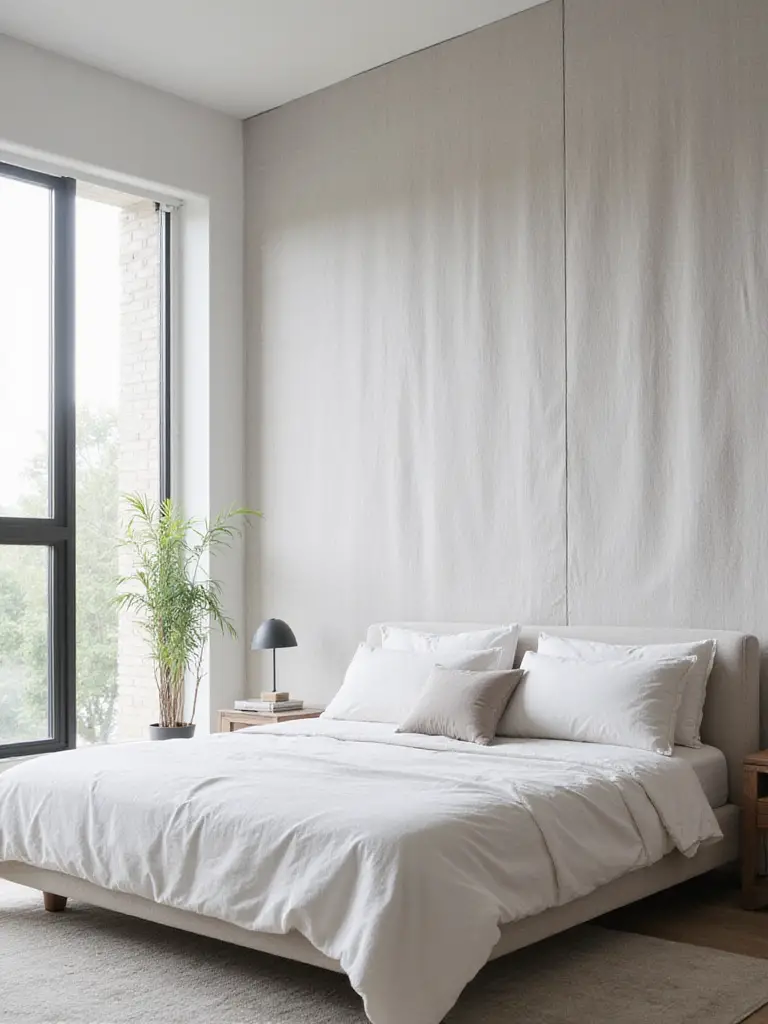
Think about a cozy linen or a soft wool felt. The effect is stunning, creating a room that feels unbelievably quiet and serene. It’s a game-changer for light sleepers or for homes where sound travels easily between rooms. From a design perspective, this is a high-impact move that speaks to a real commitment to comfort.
While it might be a bigger undertaking, using a simple track system or even a staple gun and decorative trim can make it a surprisingly manageable project. It turns a wall into the coziest feature of the room.
Sometimes the simplest things have the biggest impact. String lights are pure, accessible magic. They cast a soft, warm glow that can make any corner feel special and any evening feel cozier. For kids, they transform bedtime from a hard stop into a gentle, sparkling transition.

Now, let’s talk safety, because it’s non-negotiable. We’re only talking about low-voltage, cool-to-the-touch LED lights, preferably battery-operated or USB-powered to avoid dangling cords near a bed. Period. Use clear, removable adhesive hooks designed for the job, never nails or staples that could damage the wire.
You can drape them around a window, frame a headboard, or create a glittering canopy over a reading nook. In my work, I find that giving kids a ‘special’ light they can control—like a small set of string lights—can be incredibly empowering and ease fears of the dark.
Here’s my pitch for wall sconces: they free up precious real estate on your nightstand (less clutter!) and you can’t knock them over in the middle of the night (safer!). They provide a softer, more ambient light than a harsh overhead fixture, which is exactly what you want in a space meant for rest.

For a child’s room, I love using a sconce with a swing arm over a little reading chair or bed. It feels grown-up and special, encouraging them to pick up a book. I always recommend getting them hardwired to a wall switch that’s low enough for the child to reach. This small act of giving them control over their environment is fantastic for their developing sense of independence.
Plus, a beautiful sconce is like a piece of jewelry for your wall. It’s a functional object that doubles as a sculptural, decorative element.
Floating shelves are a designer’s best friend. They offer storage and display without the visual weight of a traditional bookshelf, keeping the floor clear and the room feeling open. But they can quickly become a magnet for clutter.
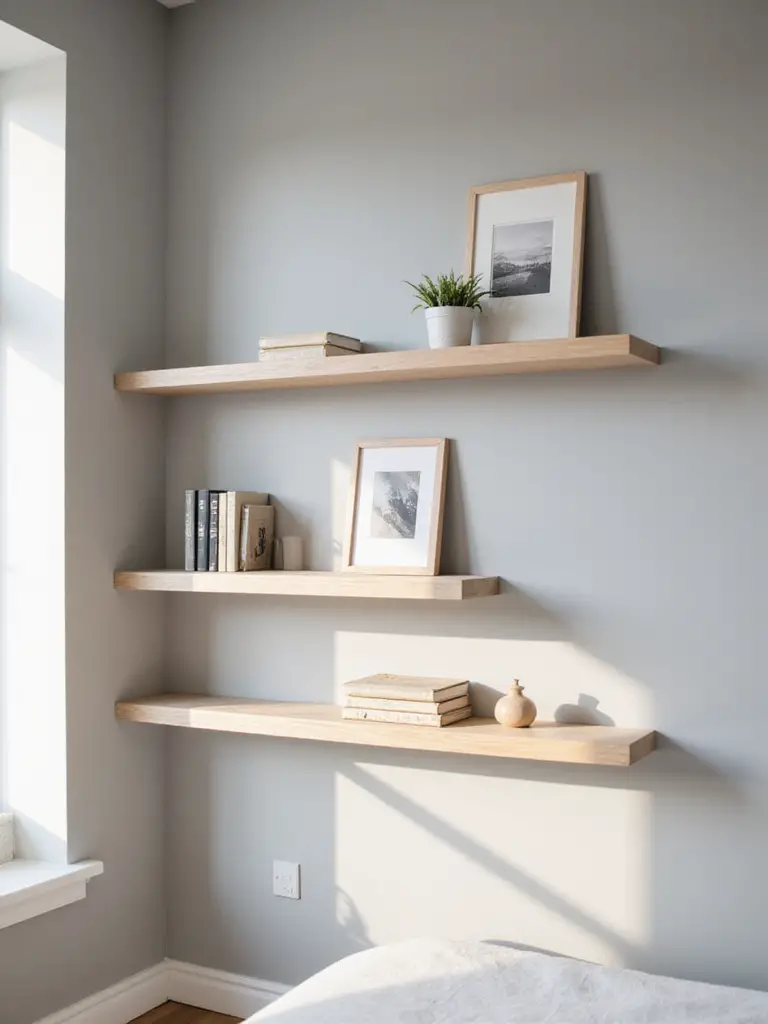
The key is to think of them as a tiny, curated stage. It’s not about cramming as much as you can onto them. It’s about a thoughtful arrangement: a stack of favorite books, a small plant, a framed photo, and one special toy. The rule I give parents is the “one-in, one-out” rule. If a new special rock comes home from a walk, another item might need to go into the toy box. It’s a great, subtle way to teach kids about prioritizing and avoiding excess.
And think beyond the obvious. A low floating shelf can be a toddler’s art display space. A series of them climbing a wall can become a creative alternative to a headboard.
A large mirror is the oldest trick in the design book for a reason: it works. It bounces light around a room and creates an illusion of depth, making any space feel bigger and brighter. Placing a mirror opposite a window is like installing a second window—it will literally double the amount of natural light you get.
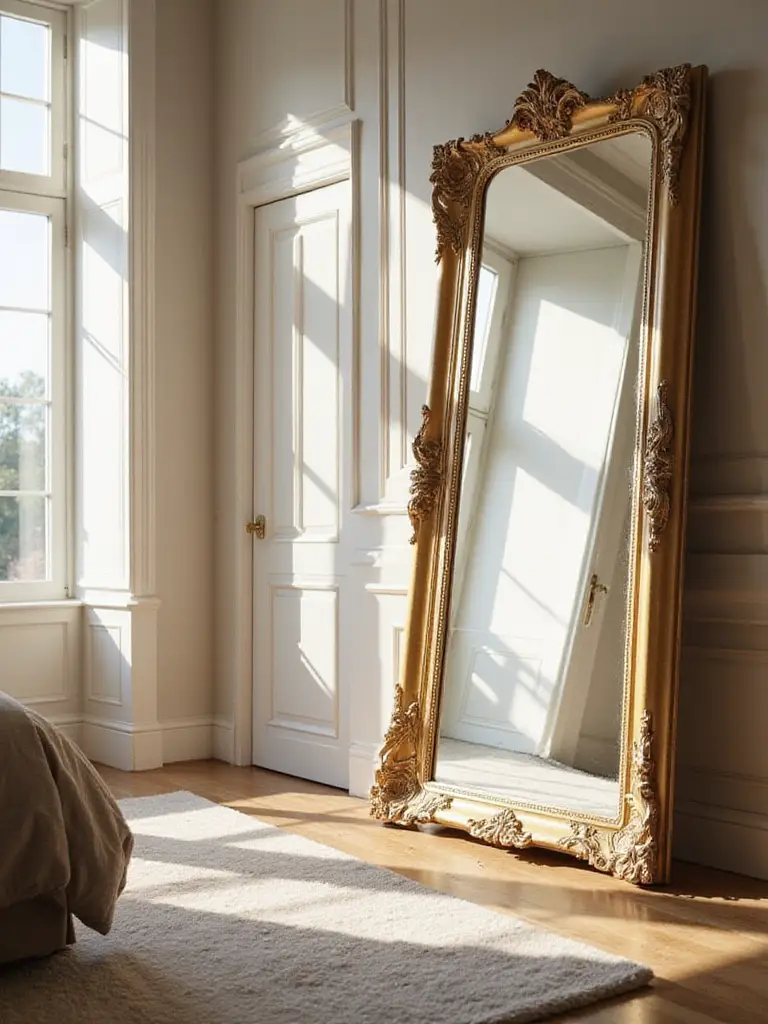
Beyond the practical, mirrors have a touch of magic to them. For toddlers, they are a source of endless fascination and a tool for developing self-awareness. For older kids, a full-length mirror is a practical necessity for getting ready in the morning, supporting their independence.
For any room a child uses, my number one priority is safety. Look for mirrors made with tempered glass or, even better, high-quality acrylic, which is shatterproof. You get all the style and light-bouncing benefits without the worry.
Bringing nature indoors is one of the most powerful things you can do for the atmosphere of your home. A vertical garden turns a wall into a living, breathing piece of art that actively improves your air quality and connects you to the natural world.
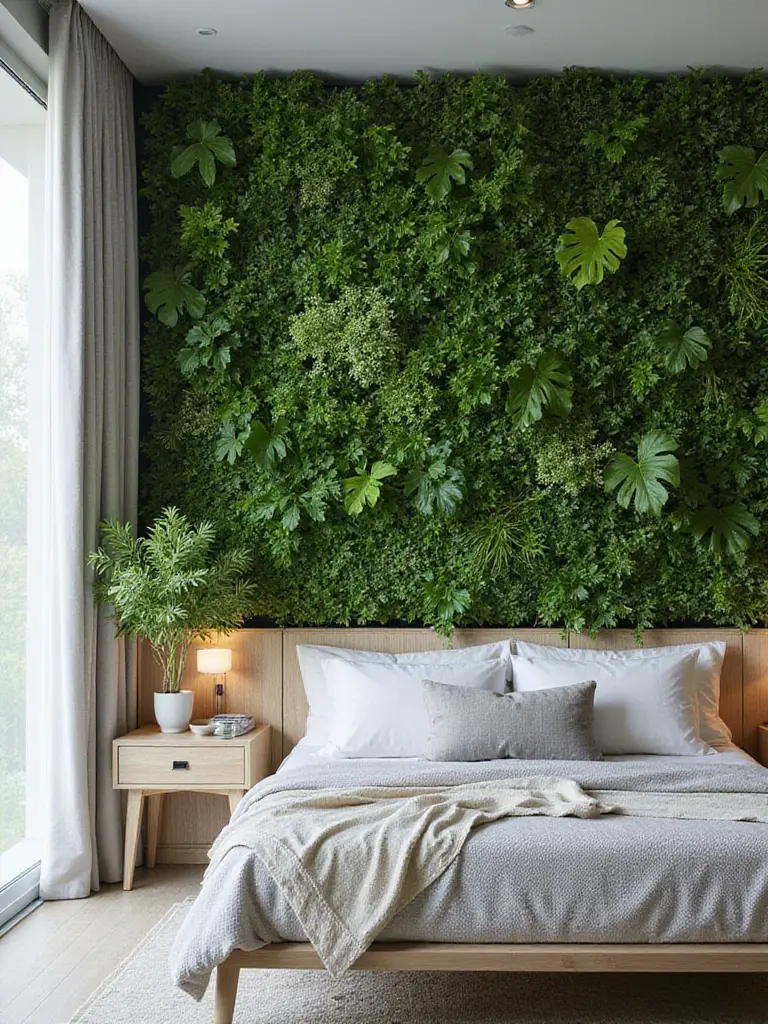
Don’t be intimidated! This doesn’t have to be a complicated, professionally irrigated system (though those are amazing). It can be as simple as a wall-mounted grid with hanging pots or a series of fabric pocket planters. Choose low-maintenance, air-purifying plants that thrive indoors, like snake plants, pothos, or spider plants.
I love incorporating this into kids’ rooms because it becomes a living lesson in responsibility. Giving a child a small spray bottle and putting them in charge of misting “their” wall plants is a simple, beautiful way to teach them about caring for other living things.
Want the impact of a mural without the need for artistic talent? Get a roll of good-quality painter’s tape (FrogTape is my go-to) and a little patience. Geometric designs—simple mountains, intersecting stripes, or bold color-blocked shapes—are a budget-friendly way to make a huge statement.
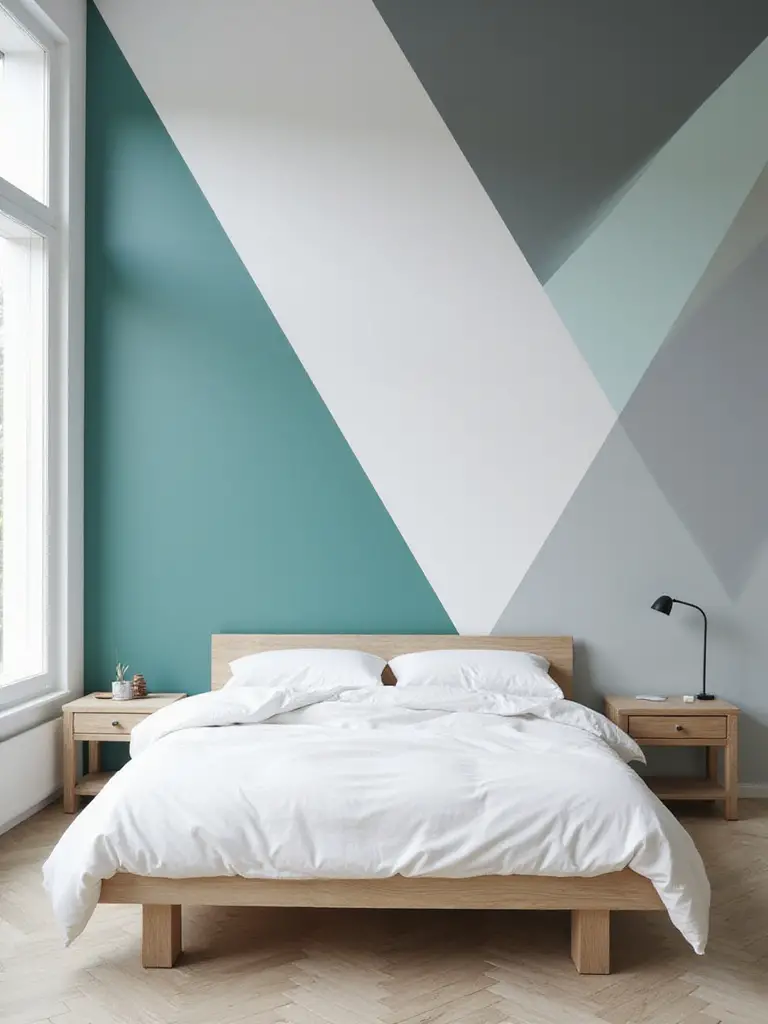
You can go bold with high-contrast colors or create a subtle, sophisticated look using different shades of the same color. I’ve seen this play out in rooms for toddlers who love tracing the big, graphic shapes with their fingers. The design becomes an interactive part of their environment.
The key to a professional look is in the prep. Measure it out, use a level, and press that tape down firmly. When you peel it back to reveal those crisp, clean lines, the satisfaction is immense.
Stenciling offers that custom, hand-painted look without the years of artistic training. It’s the perfect middle ground between simple wall decals and a full-blown mural. You can create an all-over pattern that mimics expensive wallpaper or add a single, beautiful motif over a headboard or dresser.

I learned a great trick from a project where a client wanted the look of delicate, hand-painted Moroccan tile in a nursery but didn’t have the budget. We stenciled the pattern just on the back wall of the built-in bookshelf. It took a single afternoon and a small sample pot of paint, but it gave the entire room a high-end, custom feel.
The secret is a “dry brush” technique. Get a little paint on your stencil brush or foam roller, then dab most of it off onto a paper towel before you start pouncing it onto the stencil. It prevents the paint from bleeding under the edges and gives you a perfectly crisp result.
An ombre wall, with its soft gradient of color fading from light to dark, feels like living inside a watercolor painting. It’s ethereal, dreamy, and incredibly calming—perfect for a bedroom. You can imagine a pale blue sky fading into a deep twilight navy, or a soft blush deepening into a rich rose.

I’ll be honest with you: this is one of the trickier DIY paint jobs. It requires working quickly while the paint is still wet to blend the colors seamlessly, and it’s definitely easier with a patient partner. But if you have the courage to tackle it, the result is pure magic.
The mood of the room shifts throughout the day as the light hits the different depths of color. It feels more expansive, more dynamic, and deeply soothing.
If an accent wall sets a tone, a mural creates a world. These are not your average repeating patterns; they are large-scale, immersive scenes that can transport you to a misty forest, a starry galaxy, or a whimsical, hand-painted landscape. They are storytelling on a grand scale.
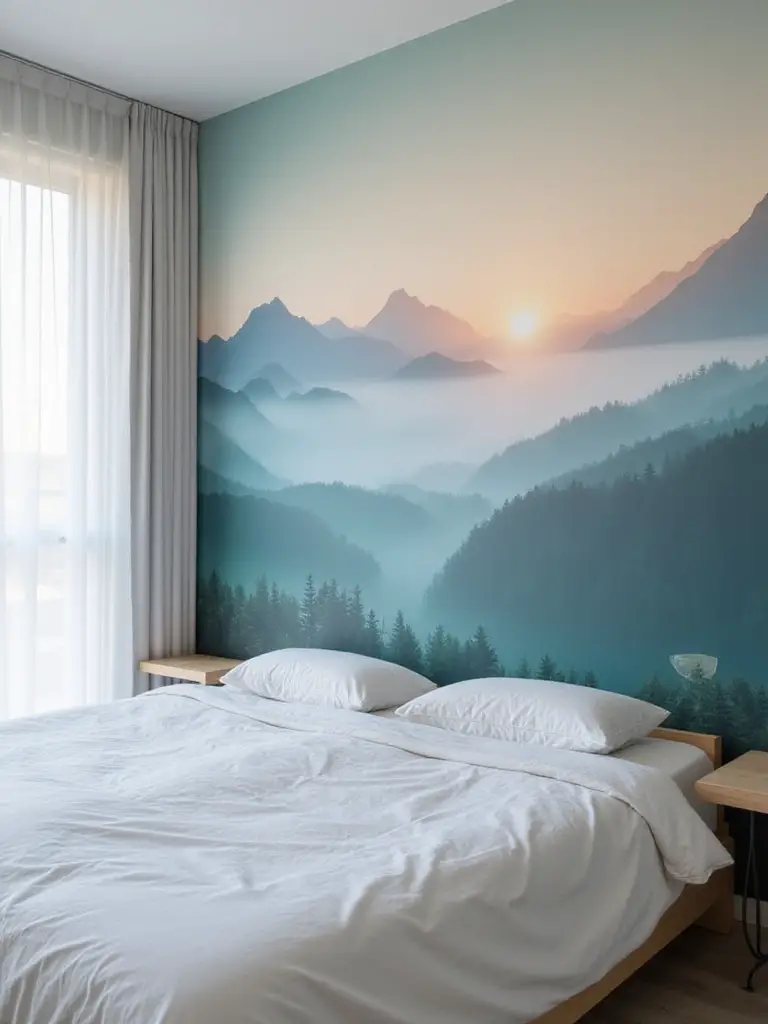
A client of mine once chose a mural of a hazy, tree-lined forest for her anxious son’s bedroom. He told me he would lie in bed and imagine walking through the trees, and it became his ‘secret quiet place’ when he felt overwhelmed. A wall became a coping tool. That is the power of this kind of design.
Companies like Rebel Walls and Minted offer stunning murals that are worlds away from the cheesy beach scenes of the past. When considering one, think about the emotion you want to create. Do you want wonder? Calm? Adventure? Choose the scene that will take you there.
Chalkboard paint is the ultimate invitation to create. It transforms a wall from a static surface into a dynamic, ever-changing canvas for doodles, lists, messages, and masterpieces. And it now comes in a whole rainbow of colors, not just black!
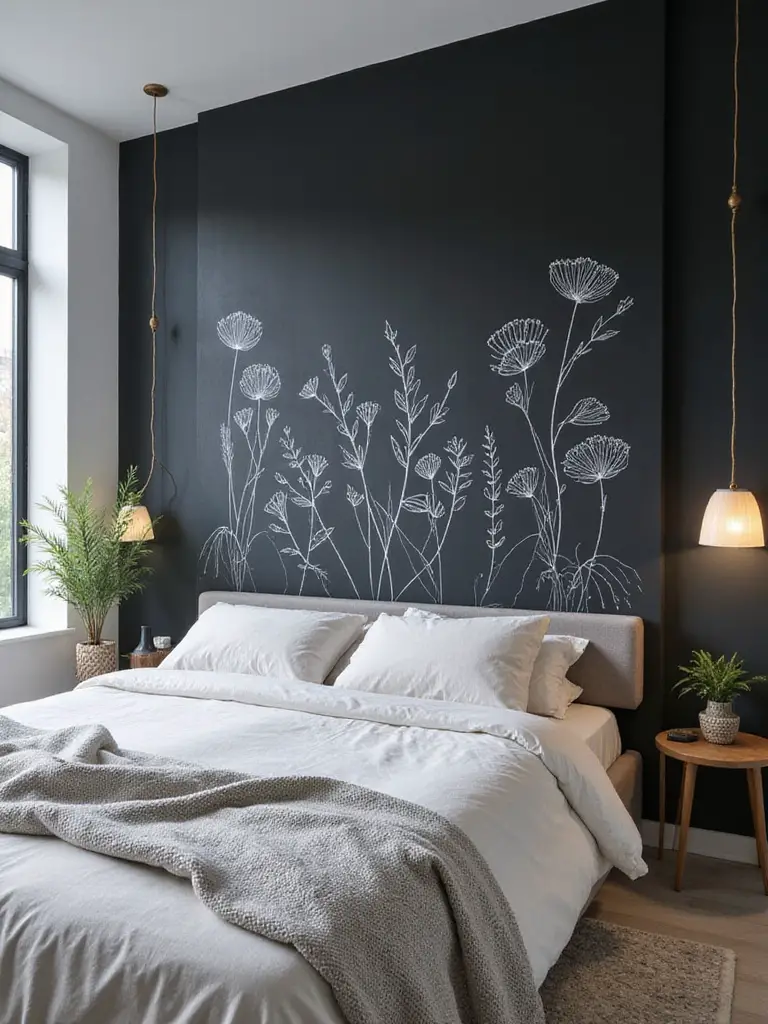
For kids’ rooms, it’s an obvious win. It contains the creative impulse to one specific, parent-approved surface. What I always tell parents is to establish the rule from day one: “This is our special drawing wall; it’s the only wall we draw on.” It’s a fantastic lesson in creative expression within clear boundaries. For a less dusty experience, look for chalk markers or whiteboard paint.
But it’s not just for kids! A sophisticated navy or deep green chalkboard wall in a primary bedroom can be a place for inspirational quotes, a weekly schedule, or love notes. It’s functional, fun, and deeply personal.
Shiplap has become so tied to the modern farmhouse trend that we’ve forgotten what it really is: clean, beautiful, textured lines. Painted a crisp white, it can feel coastal. Stained a warm wood tone, it can feel rustic or mid-century. Painted a moody, dark color, it can feel incredibly modern and architectural.
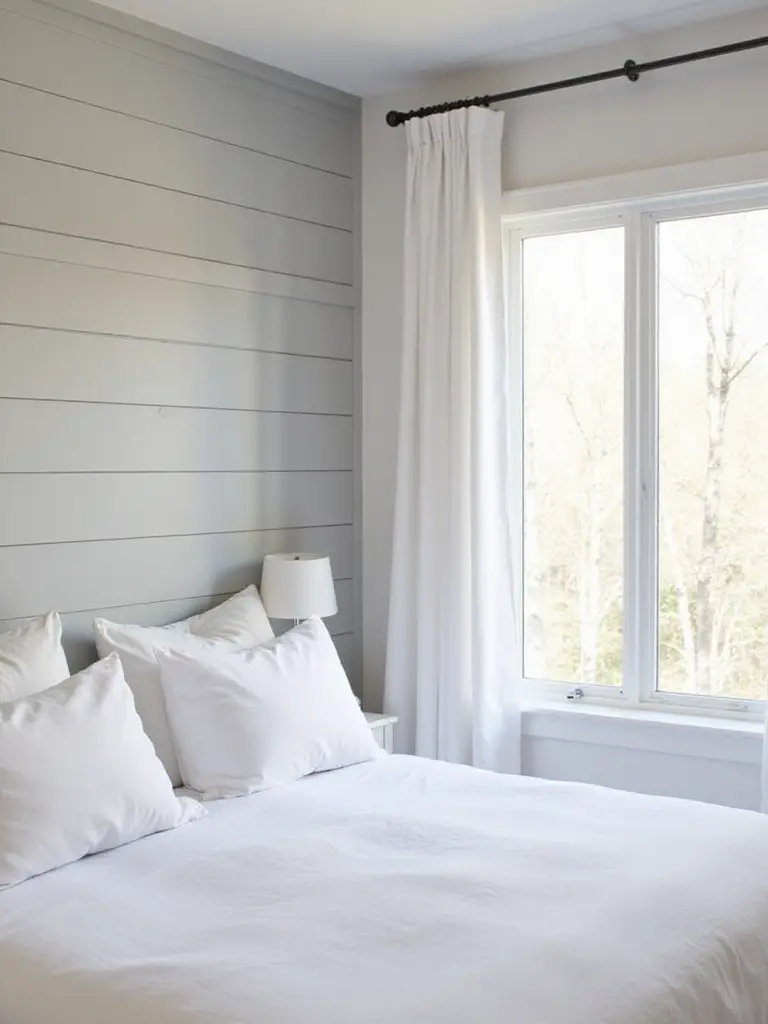
Its secret power lies in its durability. Those horizontal boards are tough and can handle the rough-and-tumble of family life far better than a plain sheet of drywall. The subtle shadow lines add texture and interest without overwhelming a room, making it a perfect backdrop that still has character.
As I mentioned before, those lines have power. Horizontal shiplap can make a room feel wider and more expansive. In my nine years of designing spaces, I find that adding this kind of simple architectural detail is one of the most effective ways to make a builder-grade room feel custom and thoughtfully designed.
A little bit of shimmer goes a long way. Metallic accents—gold, silver, copper, or brass—catch the light and add a touch of sophisticated magic. We’re not talking about a full-on disco ball room, but subtle touches that make a space feel special.
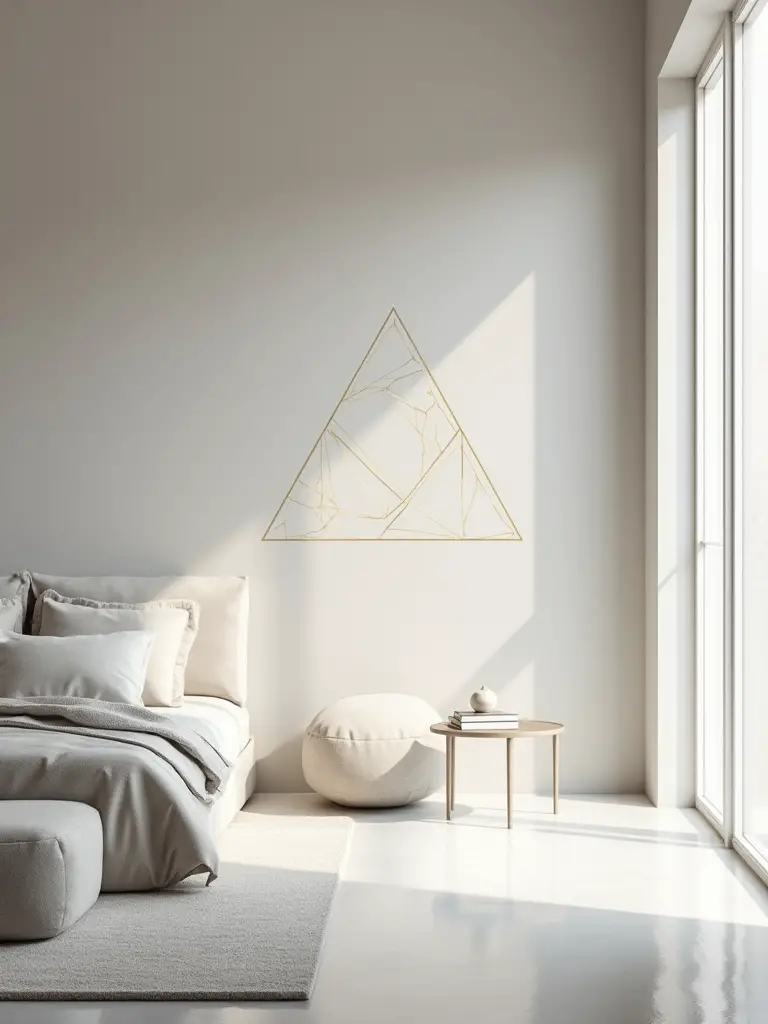
This could be as simple as small, metallic star decals scattered across a dark ceiling to create a personal night sky. Or it could be a hand-painted, thin gold line bordering a doorframe, or wallpaper with a delicate, shimmery pattern that you only notice when the light hits it just right. In the evening, under the glow of a lamp, these small details come alive and make the room feel warm and enchanting.
For me, a child’s room should always have a little touch of magic. A hint of sparkle is a simple way to create that sense of wonder.
Your bedroom walls aren’t just holding up the ceiling. They are the backdrop to your family’s life. They witness bedtime stories, pillow forts, early morning cuddles, and teenage dreams. They have the power to make a room feel calmer, more creative, more organized, and more you.
The best design is never static. It’s a framework for living that can adapt as your child grows and your family’s needs change. The chalkboard wall that held a toddler’s scribbles can later hold a tween’s algebraic equations. The neutral walls that were a backdrop for baby toys can later showcase a teen’s concert posters.
So as you look at your own walls, don’t just see a blank space. See an opportunity. Which of these ideas makes you feel a little spark? Which one feels like it could help tell your family’s story? That’s your perfect place to begin.